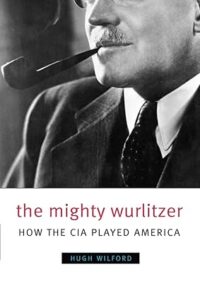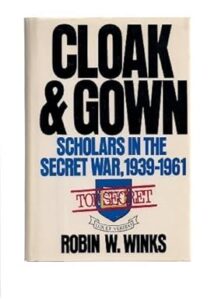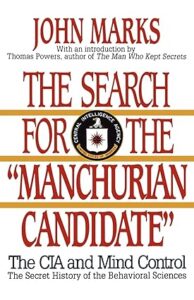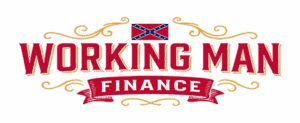For decades, powerful U.S. institutions like the IRS and CIA have been wielded not just as tools of national governance but as weapons of political suppression.
From targeting dissenters and silencing alternative medical pioneers to manipulating public perception through controlled media and academia, these agencies have often acted in the service of entrenched elites rather than the American people.
By exposing this long history of abuse, we can better understand how government overreach threatens our freedoms—and why resisting it matters more than ever.

IRS Abuse in Fact and Fiction
For readers seeking deeper insight into the political weaponization of the IRS, Power to Destroy: The Political Uses of the IRS from Kennedy to Nixon by John A. Andrew III (Ivan R. Dee, 2002) is essential reading.
The book explores how the IRS was strategically deployed to suppress political opponents and dissenters during key presidential administrations.
On the fictional front, One in a Million by Pat Shannan offers a gripping and emotionally charged narrative that mirrors real-life abuses.
The story follows an American whose family is devastated by IRS overreach, sparking his involvement in a grassroots rebellion against federal tyranny.
Both thrilling and thought-provoking, the novel captures the frustration many feel toward corrupt taxation and centralized control.
It’s a powerful reminder that storytelling—especially from dissident voices—remains a potent weapon in the fight for freedom.
Medical Dissent and the War on Alternative Cancer Treatments
One highly recommended book explores a case in which the Justice Department—working alongside the Food and Drug Administration—targeted a well-respected physician whose groundbreaking research into non-approved cancer treatments threatened the profit-driven monopoly of the medical establishment.
The book, The Burzynski Breakthrough by Thomas Elias (Lexikos, 2000), tells the powerful and disturbing story of Dr. Stanislaw Burzynski, a Texas-based doctor who made promising advances in the fight against cancer.
Rather than being applauded, his work was met with fierce resistance from the medical elite, leading to criminal charges.
Yet his grateful patients—many of them survivors—rallied in his defense, taking to the streets to show support.
Though the prosecution ultimately collapsed, the events surrounding his persecution are laid out in compelling detail in this eye-opening book.

When it comes to homeopathic, natural, and alternative remedies, I have long been a passionate advocate and practitioner.
I emphasize the growing value of the Internet as a resource for those seeking information in this area, offering countless leads for further research.
Michael Collins Piper also noted that American Free Press—his newspaper—regularly publishes news and resources on cutting-edge developments in alternative health.
He often pointed out that delving into this vast and growing field could fill volumes—and, in fact, many excellent books on the topic are now available.
How the CIA Manipulated Culture, Academia, and Minds: 4 Must-Read Books
When we think about the CIA, covert operations shaped what Americans read, watched, and believed, these five books are essential reading.
Together, they paint a chilling picture of how the CIA used influence campaigns not just abroad—but right here at home.
1. The Cultural Cold War by Frances Stonor Saunders
Frances Stonor Saunders’ The Cultural Cold War: The CIA and the World of Arts and Letters (2000) uncovers the Agency’s massive influence over American intellectual life during the Cold War.
Originally published in the UK as Who Paid the Piper?, this book reveals how the CIA covertly funded prominent writers, artists, and cultural institutions.
One of the most striking revelations is the role of Irving Kristol—former Trotskyite turned neoconservative icon—and his son, William Kristol.
Both became instrumental in reshaping American foreign policy toward an interventionist, Zionist-driven agenda.
Saunders shows how intellectual life was carefully shaped to serve anti-communist propaganda, often cloaked in highbrow discourse.
This is not just a history of cultural manipulation—it’s a deep dive into how propaganda became mainstream.

2. The Mighty Wurlitzer by Hugh Wilford
Hugh Wilford’s The Mighty Wurlitzer: How the CIA Played America (2008) takes its name from CIA official Frank Wisner’s metaphor for the Agency’s propaganda machine—his “mighty Wurlitzer” on which he could “play any tune.”
The book outlines how the CIA funded and managed a wide range of front organizations: student groups, labor unions, feminist groups, journalists, religious organizations, and more.
These fronts weren’t just for show—they actively shaped public debate, foreign policy narratives, and even civil rights discourse.
Wilford uses newly uncovered documents and interviews to show how far-reaching this manipulation went.
He also covers the 1967 Ramparts magazine exposé that first brought this covert influence campaign into the public spotlight—an intelligence scandal from which the CIA’s image arguably never recovered.

3. Cloak and Gown by Robin W. Winks
If you thought academia was immune to intelligence infiltration, Cloak and Gown: Scholars in the Secret War 1939–1961 (1987) by Robin W. Winks will prove otherwise.
This book exposes how the OSS and later the CIA recruited scholars—particularly from elite universities like Yale—to help shape official history and embed operatives within academic circles.
Winks highlights how historical writing itself was weaponized. Scholars and historians were essentially tasked with creating Cold War narratives approved by the intelligence community.
Michael Collins Piper often referenced the work of Dr. Harry Elmer Barnes, who called these academic propagandists the “Court Historians.”
This book reveals how America’s intellectual elite became part of a carefully managed historical revisionism machine—one that still affects how we remember World War II and the Cold War today.

4. The Search for the Manchurian Candidate by John Marks
For many, the most disturbing CIA legacy lies not in culture or academia—but in mind control. John Marks’ The Search for the Manchurian Candidate (1979; reissued in 1991) is the definitive account of the Agency’s infamous MK-ULTRA program.
This isn’t fiction. Based on over 16,000 pages of declassified CIA documents, Marks reveals how the Agency experimented with hypnosis, drugs (especially LSD), sensory deprivation, and other tactics in an attempt to control human behavior.
The title is a reference to the 1959 novel The Manchurian Candidate by Richard Condon (and the 1962 film), in which a brainwashed soldier becomes an unwitting assassin.
In Marks’ non-fiction version, the plot is all too real—Americans were subjected to mind control experiments without consent.
Marks’ work followed the explosive revelations of the Senate’s Church Committee hearings in the mid-1970s, which shattered the illusion that only Nazis or Communists had engaged in such inhumane experimentation.
The CIA had started exploring mind control almost immediately after its founding in 1947, under projects code-named BLUEBIRD, ARTICHOKE, and finally MK-ULTRA.

What These Books Reveal—and What They Don’t
Taken together, these four books offer an unflinching look at the scale of the CIA’s influence on American society—from shaping what we think to controlling how we think it.
In fact, many good people within the CIA, FBI, NSA—and yes, even the IRS—have quietly resisted the corrosive agendas of globalist and Zionist operatives.
Though it’s tempting to view these institutions as monolithic, the truth is more complex. Behind the scandals and propaganda lies an internal battle—one that honest patriots have been quietly fighting for decades.
Final Thoughts
Understanding the CIA’s true role in shaping American society is essential for anyone who values truth, independence, and intellectual freedom.
These books aren’t conspiracy theories—they are deeply researched, document-based histories that challenge the sanitized version of the American story we’re often told.
If you’ve ever questioned why certain ideas dominate public discourse or why historical narratives seem oddly aligned with power, these works will answer those questions—and open many more.
And if you’re ready to explore deeper into the forces at play in shaping our modern world, stay tuned for our next article: Meyer Lansky the Hidden Power Behind U.S. Crime.
